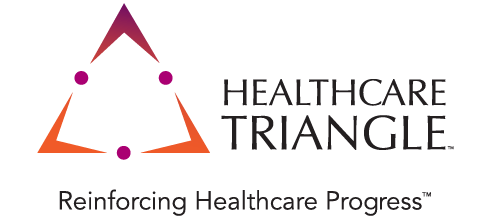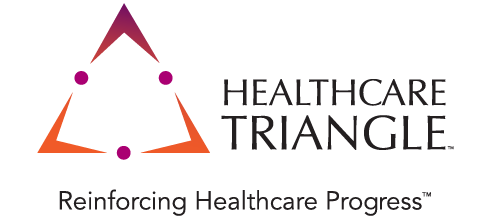Data Visualization in Healthcare: Game Changer Insights
Healthcare Triangle
Sept 06, 2024
Data visualization is an influential medium for changing raw data into a more visual, understandable, and appealing form. It graphically represents complex information to show trends, patterns, and outliers that may be obscured when viewed in tabular form. Such a visual representation of data enhances the capability for effective comprehension, ensuing better decision-making and higher productivity.
What is data visualization in healthcare?
Data visualization plays an integral role in the analysis and interpretation of large volumes of medical data within the healthcare sector. From patient records to clinical trials, from healthcare utilization to trends in population health, Healthcare Data Platforms bring salient insights for health professionals.
Visualization of data allows health organizations to make more informed decisions about factors such as:
- Resource allocation
- Treatment planning
- Strategic preventive work
Types of healthcare data visualization
A variety of data visualization techniques has presently been applied to healthcare:
These are very good for outlining any trending effects that may be visible over time, such as patient vital signs, prevalence of a disease, or even comparative healthcare costs.
MSPs for healthcare must be able to demonstrate their record in having Hunter-Sharp security measures in place. This means advanced encryption technologies are in place, regular security audits occur, and tight access controls ensure that only those with proper authorization will have access to this sensitive information.
The scatter plots will identify the relationship between the two variables, meaning the association existing between body mass index and blood pressure.
These are useful for representing proportions or percentages of data, such as the distribution of the patients across the spectrum of specialties being treated or the various components of the health care cost.
Heat maps show data through color gradients, reflecting density or intensity. In that respect, they effectively can display points of high and low activity, for example, bottlenecks in the flow of patients in hospitals or geographic variation in disease rates.
These are maps used to present data over space, for instance, the distribution of health facilities across regions, or the incidents of diseases across different regions.
Importance of data visualization in healthcare
Data visualization offers many benefits to health organizations, including:
Smarter decision-making
Data visualization helps health professionals realize trends, patterns, and outliers that might have otherwise been missed. Thus, it provides them with grounds for well-researched decisions on the care given to patients, resource planning, and prevention.
Improved patient outcome
Through data visualization, it is easy to identify patients who are at risk, track disease and treatment outcomes, hence enabling improved patient outcomes and good health status generally.
Increased Efficiency
Data visualization enables the smoothing of processes and reduction in inefficiencies with insight into resource utilization, workload distribution, and operational bottlenecks.
Improved resource allocation
By understanding the distribution of healthcare resources and identifying areas of need, data visualization can help ensure that resources are allocated effectively.
Better research
Data visualization allows for the facilitation of data analysis and interpretation to support research efforts in creating newer treatments and interventions.
How does Machine Learning work in healthcare data visualization?
Machine learning algorithms can automate processes in data visualization and extract deeper insights from complex datasets. For example, one might use machine learning for:
Machine learning algorithms on their own may identify patterns and trends in datasets, which would be cumbersome, almost impossible, for a human to go through entry by entry.
Machine learning can also enable the development of custom visualizations based on one’s needs and preferences.
The Machine Learning model could be applied to forecast future trends and outcomes based on historical data, predicting the likelihood a given patient could develop a particular ailment or the demand for health services in each area.
The Machine Learning model could be applied to forecast future trends and outcomes based on historical data, predicting the likelihood a given patient could develop a particular ailment or the demand for health services in each area.
Effective Use of Data Visualization in Health Care
Data visualization can powerfully remodel the raw healthcare data into actionable insights. By effectively applying data visualization techniques, healthcare professionals can uncover hidden trends, patterns, and outliers.
This leads to better decision-making and improvement in outcomes for the patients.
1. Define Clear Objectives
Set clear objectives before data visualization. What concrete questions do you want to answer? What do you want to learn? In defining your goals, make sure your visualizations will be relevant and provide the information you want.
2. Apply Appropriate Visualization Techniques
The proper choice of visualization technique depends on effectively communicating your message. Most often, it deals with what kind of data you are working with combined with the questions you will answer. Line charts show a trend followed by continuous data over time, whereas in bar charts, categories are compared. Scatter plots reveal and explore the relationships existing between pairs of variables. Heatmaps visualize a matrix of numeric values as colors at intersecting points.
3. Data Quality
The quality of your data directly affects the accuracy and reliability of your visualizations. Ensure that the data is accurate and complete, using consistent formats for similar data. Clean and pre-process your data to eliminate errors, inconsistencies, or missing values. This helps circumvent incorrect conclusions from visualizations.
4. Clear and Concise Labels
Labeling: Effective labeling is a requirement for clarity in your visualizations. Use clear, concise labels-everywhere: related to axes, data points, or any other element of the visualization. Avoid clutter and excess text that may take away from the main message.
5. Consider the Audience
First, confirm your audience is relevant to the applied visualizations to the subject on stage. Keep in mind the level of technical expertise and knowledge of your target audience. For non-technical audiences, use visualizations that are easy to understand and unsophisticated. More complicated visualizations might be helpful for health professionals.
6. Leverage powerful data visualization tools
There are many data visualization tools which can support the creation of professional and engaging visualizations: Power BI, Tableau, Python libraries like Matplotlib and Seaborn, among others. All these applications offer a great diversity of functions, starting from simple charts up to advanced analytics functions.
7. Uncover Data-Driven Insights
Data visualization is not exactly about making pretty pictures, but about extracting useful information out of your data. Surf your visualizations for trends, patterns, anomalies, and so on. Ask questions, try out different visualizations, and use your imagination to spot hidden correlations. Following are some guidelines that allow one to effectively implement data visualization in healthcare, gain meaningful insights, and make better decisions that will improve patient outcomes.
Overcoming Common Data Visualization Challenges
Common data visualization challenges include:
A) Data Complexity
It sometimes proves difficult to work with a large, complex dataset. Data complexity is usually removed with advanced tools and techniques needed to visualize the data.
B) Unskilled in expertise
Not everyone can draw and design visualizations purposefully. Luckily for such groups of people, there are a plethora of resources available to help them acquire data visualization skills.
C) Data privacy
Data privacy and security are prime concerns for every business vertical in general, while in healthcare, they become paramount. The data visualization should be ensured with secured sensitive patient information, maintained confidentially.
Future of Data Visualization in Productivity Enhancement
Data visualization is a rapidly growing, very promising field that will eventually bring a revolution in the ways of productivity in every sector that includes health care. With increasing emerging technologies, some of the key trends to watch that are expected to define the future of data visualization include:
1. Advanced algorithms
Higher degree of Machine learning and artificial intelligence (AI) will have a huge potential to automate data visualization. Advanced algorithms can be used to:
A) Automatically create visualizations
AI-powered tools analyze complex datasets and automatically recommend suitable techniques for visualizing them. This will save time and investment by the data analyst.
B) Recognition of patterns and trends
Machine learning can identify hidden patterns and trends placed within gigantic quantities of data—not comprehensible to humans—by floating through these, shedding some important light.
C) Make the visualizations more personalized
AI gives more power to the tailoring of the visualizations according to individual user preferences and needs, which optimizes their experience.
2. Works Hand in Hand with Other Tools
Data-visualization tools will be further integrated with other healthcare applications—including EHR systems and analytics platforms—leading them to support:
A) Real-time visualization
With the information collected, it may be visualized in real time, thus giving real insights for decision-making.
B) Data-driven workflows
Combine visualizations with workflows to automate processes and work smarter. More rich collaboration: The sharing and analysis of visualizations will be much better aligned with health professionals.
3. Enhanced Interactivity
The interactive visualizations empower visual data exploration for further insights, and this is done by using:
A) Interactive features
Users can go deeper into the data with features, such as zooming, panning, and filtering, along with features to enable drill-down.
B) Natural language processing
Users could interact with a visualization using natural language—asking questions and getting insights relevant to those questions.
Augmented and virtual reality are being fuelled to make experiences more immersive.
4. Focus on User Experience
Data visualization tools are designed in a user driven way, which comprises :
A) User-friendly interfaces
Tools will be made intuitive to learn and use for even a person without a technical background.
B) Customization
Users can tailor visualization to suit their satisfaction as per personal preference.
C) Accessibility
Visualizations will be accessible to users with disabilities, ensuring that everyone can benefit from data-driven insights.
With time, data visualization is growing further in terms of innovation and new, more powerful tools that are emerging to assist organizations in harnessing the potential possessed in data towards productivity.
It is these trends that health professionals can embrace to arrive at better decisions that improve patient outcomes and the general quality in health delivery.
Conclusion
Data visualization can differentiate healthcare organizations in stimulating better decision-making, effectively improving patient outcomes and organizational efficiency.
With the right application of data visualization techniques, health professionals will be able to unlock their data insights and spur more innovation in the industry.
With technology continuously emerging, the future for data visualization in healthcare looks bright, with a lot of exciting opportunities in enhancing productivity and instilling better care for the patients.


